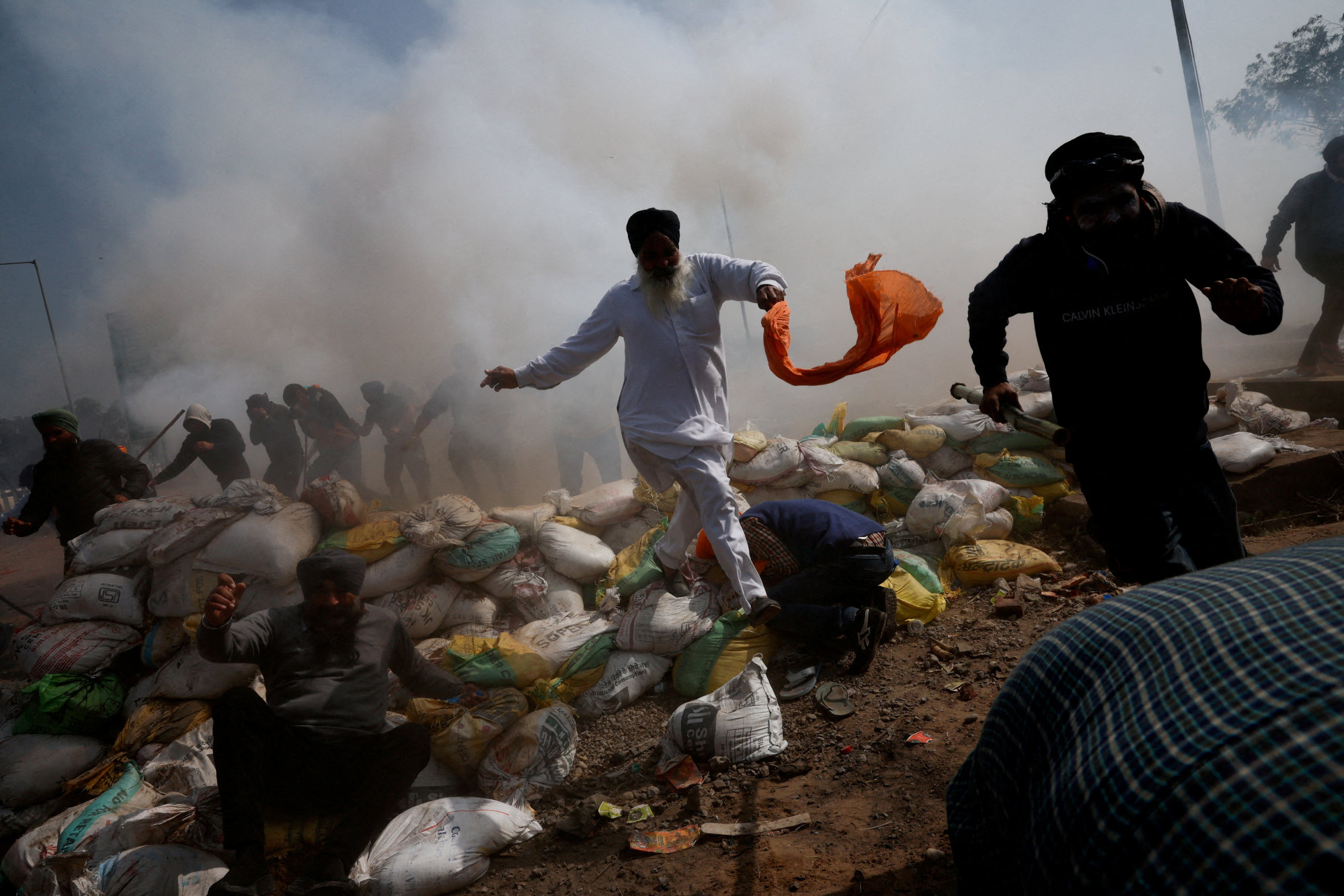
India’s protesting farmers close in on New Delhi with new strategy to avoid police – travelling separately in cars and buses
- The farmers have been advised to travel by buses and cars to avoid police blockades instead of marching in large groups
- Their demands include loan waivers and introducing legislation on minimum support prices for crops
Protesting farmers in India resumed their march towards New Delhi on Wednesday after a brief hiatus and have changed their tactics in a bid to thwart attempts by Indian authorities to stop them.
Rather than marching as large groups, participants have been advised by protest leaders to disperse and travel by buses and cars to avoid police blockades that have been set up around the capital’s three main entry points.
The tactical change comes after convoys of farmers representing the “Delhi Chalo” (Let’s Go to Delhi) movement met fierce resistance previously from authorities who were attempting to turn them back towards Punjab, where most of the protesters come from.
The movement is aiming to pressure India’s ruling Bharatiya Janata Party (BJP) government into meeting the protesters’ demands, including loan waivers and new legislation on minimum support prices (MSP) for crops.

Protest leaders say the authorities’ attempts to stop the march before it reaches Delhi are not only undemocratic but also likely to fail, as the farmers are unlikely to back down until their demands are met.
Balbir Singh, a 48-year-old farmer from Punjab, arrived at a protest site near Shambhu, located on the border between Punjab and Haryana, amid rallying cries to resume the march towards Delhi.
“Today, we are being prevented from moving forward despite our desire to protest peacefully. But we will soon find ways to reach there. This heavy-handedness from the government won’t last long,” he told This Week in Asia on Wednesday.
The protesters have started their journey towards Delhi by boarding buses and trains from various parts of the country, including Madhya Pradesh, Bihar, South India, and other regions, according to Sarwan Singh Pandher, one of the leading protest leaders.
“They are expected to reach Delhi within a day or two. Hundreds of farmers will come soon, and it remains to be seen how the government will respond to our protest this time,” Pandher added.

The protest leaders said the farmers had been staging protests at border points in the past few weeks but had been prevented from advancing towards Delhi.
“Our fundamental right to protest is being denied in this country. However, the government’s attempts to deter us will not dampen our resolve,” Pandher said.
On February 13, thousands of farmers took to the streets across India, advocating for guaranteed minimum prices for their crops as well as debt relief and other policy concessions. They were met with a heavy blockade imposed by the state and central governments.
The farmers tried to break through the erected barricades and police reacted by using tear gas, pellets, and drones to scatter them.
‘Fascist’: India’s police threaten to cancel protesting farmers’ passports
The skirmish led to the death of 21-year-old farmer Shubhkaran Singh, who was killed near Khanauri, a town in Punjab, while two other protesters were blinded.
Although there have been three rounds of talks between farmer leaders and Delhi, an agreement has yet to be reached on the government’s proposed offers.
During the previous round of talks on February 18, a government panel had proposed that five crops – moong dal, urad dal, tur dal, maize, and cotton – be purchased at MSP for a period of five years through central agencies. The farmers rejected the proposal and returned to their protest sites.
The farmers also called for a four-hour countrywide “rail roko” (protest on railway tracks to stop trains) on March 10.
Pandher slammed the “dictatorial” move by the government to erect barriers on the route towards Delhi and around Jantar Mantar, the designated protest site in the capital. Despite those challenges, Pandher said the injustices faced by the farmers would be eradicated.
Ronki Ram, a political analyst and professor at Panjab University, explained that the origin of the protests should be seen in the context of how farming processes in Punjab and across India have evolved over the decades.
Rape of Spanish tourist sparks debate on prevalence of sexual violence in India
“Mechanised agriculture brought about increased use of chemicals and water, leading to concerns about soil degradation and higher costs for farmers. They began demanding stable prices for their products to ensure a decent livelihood,” Ram said.
Market economy reforms introduced in 1991 pressured developing countries like India to remove subsidies for farmers. “Coupled with [pro-business] local policies, this has led to the current situation where farmers are demanding fair treatment,” Ram said.
The government should recognise that farmers are not troublemakers but are grappling with major challenges to get by, according to Ram.
“The state should not view the farmers’ protests as a law and order issue. It should listen to the farmers’ grievances rather than try to suppress them,” he added.

Lakhwinder Singh, an economics professor at Punjabi University, told This Week in Asia that agriculture’s contribution to India’s economy had consistently declined in the past few decades, even as many livelihoods still relied on the sector.
He said the woes faced by farmers had been aggravated by the strong influence of corporate lobbyists who sought to let market forces guide their agricultural business.
Apart from the lack of government investment in agriculture over the past 30 years, farmers also faced big challenges in other areas such as the rising costs of farming inputs and healthcare, Singh said.
Dealing with the concerns of farmers could go towards easing inflationary pressures in India, he added.
“The government must understand that addressing farmers’ demands can stabilise food prices and benefit consumers, as commodities without minimum support prices can lead to high inflation.”


